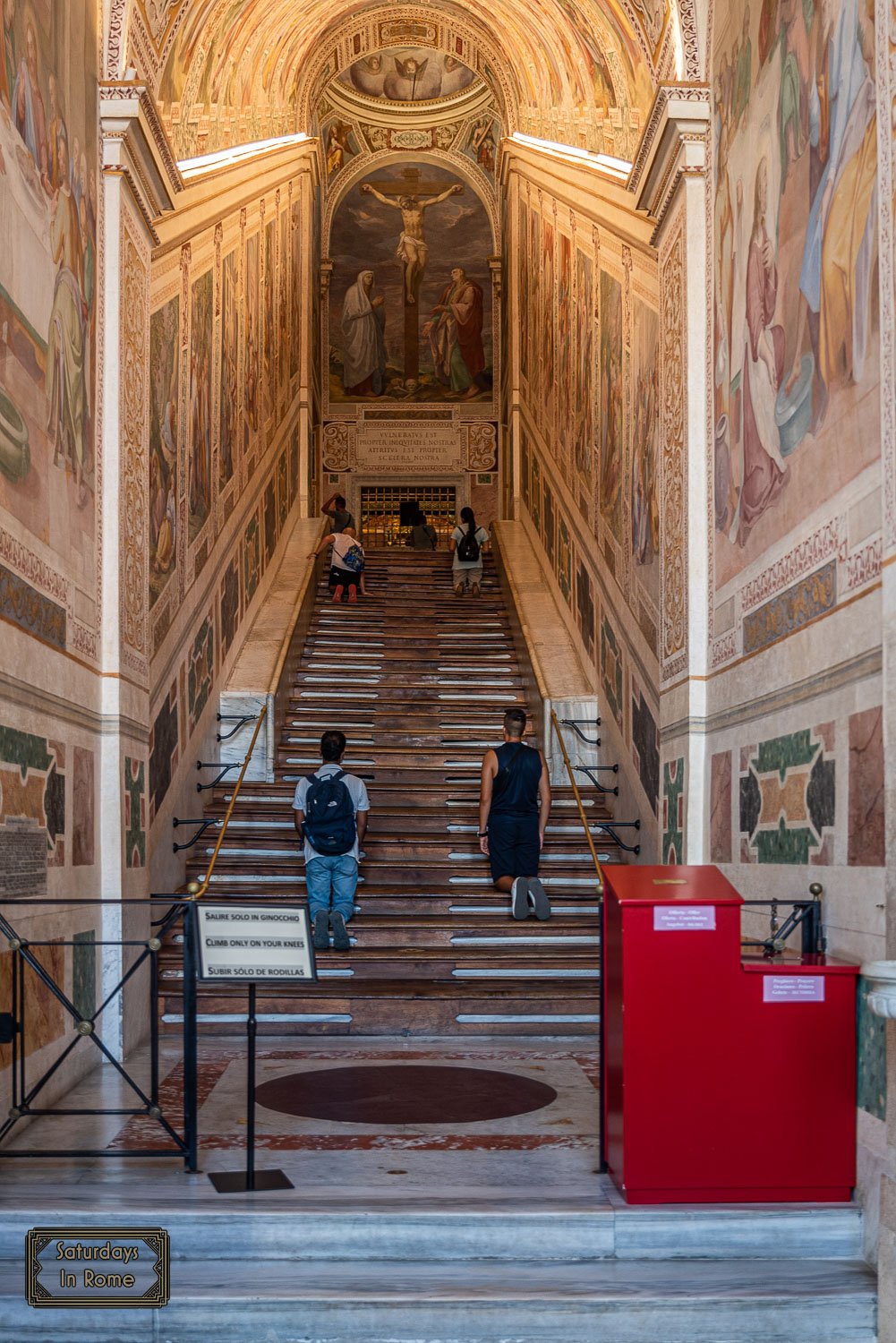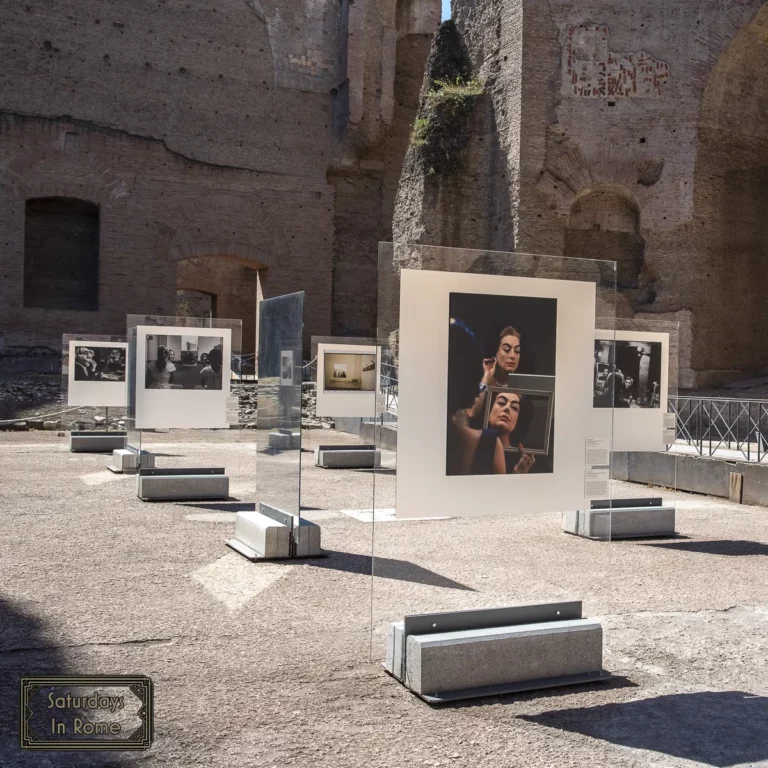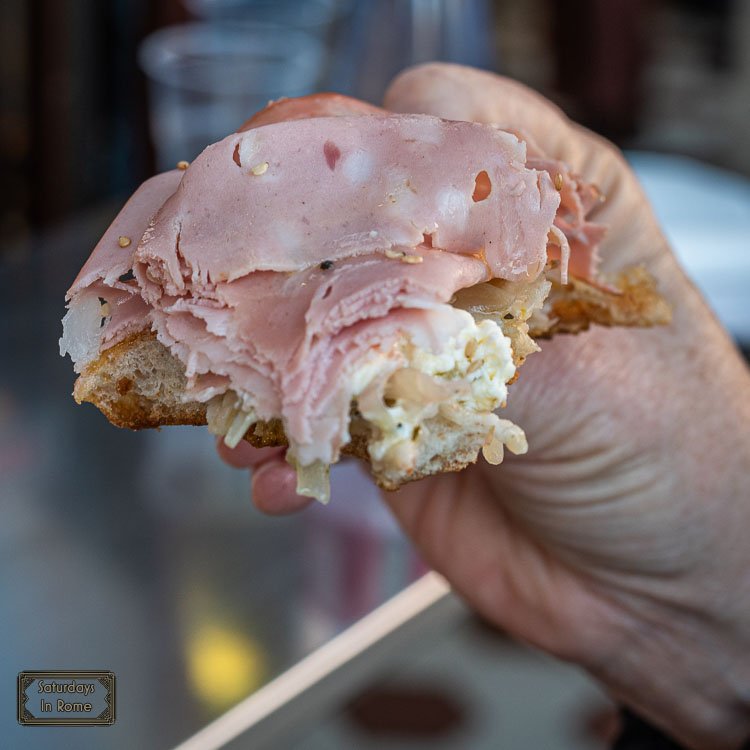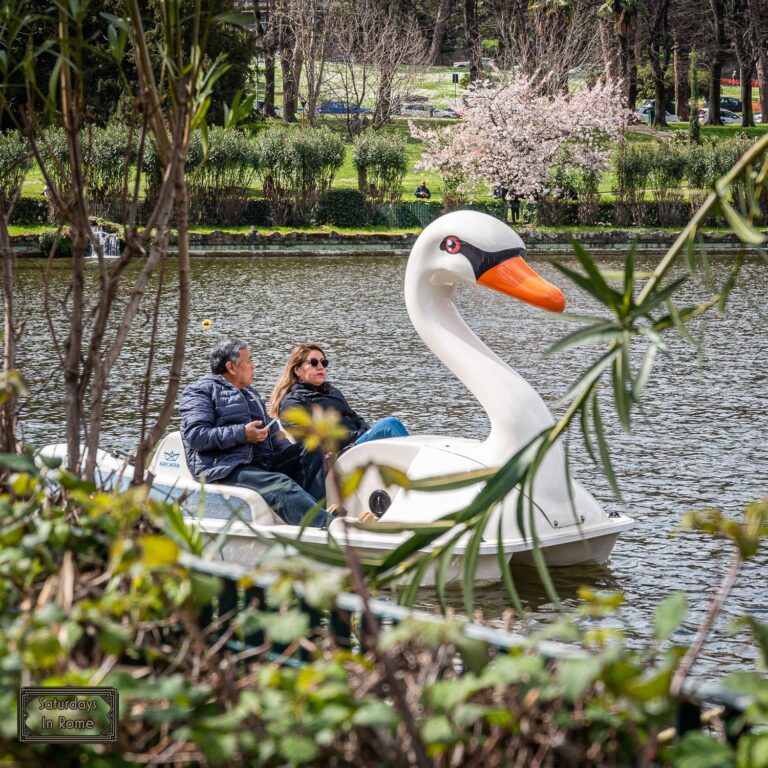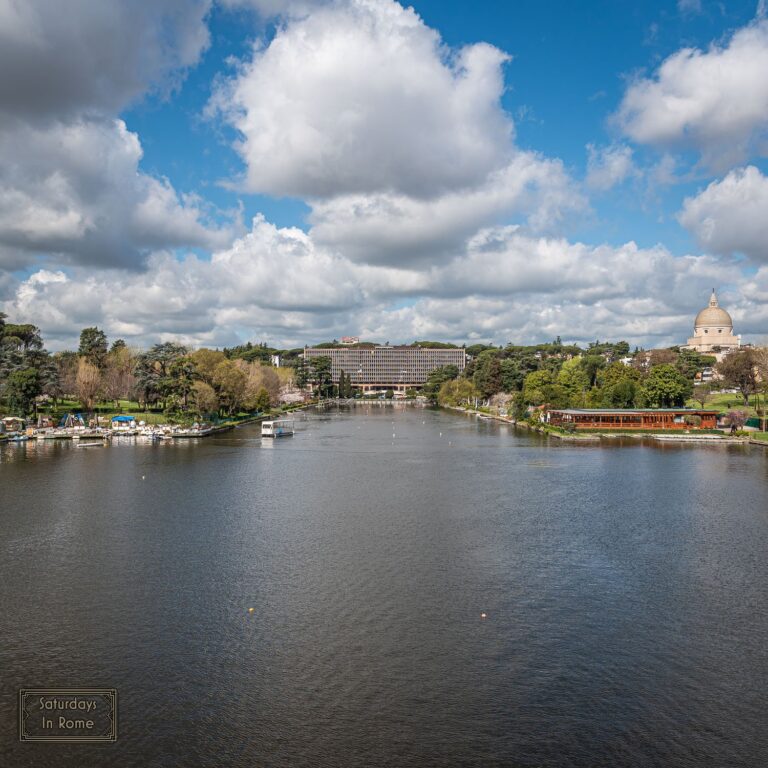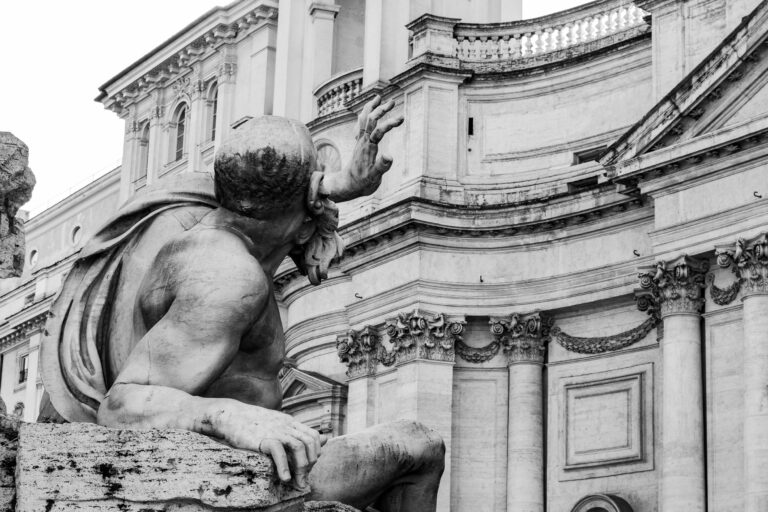Scala Sancta Is A Unique Experience For The Faithful
The Scala Sancta is a major stop on the Pilgrims Trail and if you visit this site near the Basilica of Saint John in Lateran you could receive you indulgence.
These are thought to be the stairs that Jesus climbed on his way to his trial during his Passion. The building is called the Pontifical Sanctuary of the Holy Stairs (Pontificio Santuario della Scala Santa), and includes part of the old Papal Lateran Palace. According to Catholic tradition, in 326 AD the staircase was transported from Jerusalem to Rome by the praetorium of Pilate at the request of Saint Helena, mother of Emperor Constantine.
Need Help Planning?
- Cheap Flights: Find The Most Affordable Flights.
- Accommodations: From 1 to 5 Stars And More.
- Car Rentals: Affordable Travel Across Italy.
- Sightseeing Tours: Explore Some Amazing Tours.
- Buying An eSIM: Stay Connected In Italy.
This post includes affiliate links.
According to the same Catholic tradition, the 28 steps that make up the staircase are exactly the same ones that Jesus climbed several times on the day of his death sentence in the palace of Pontius Pilate. Hence the name of Scala Pilati or Scala Sancta.
Climbing The Scala Sancta In Rome
The Holy Stairs can only be climbed on one’s knees. If you would prefer to walk to the top to see the chapels, there are four additional staircases, two on each side, which are functional and have less historical significance.
Only On Your Knees
In the 18th century, the marble stairs were covered in wood to reduce the wear and tear after being significantly worn away by the many pilgrims climbing the stairs over time. Every Friday of Lent it is customary to go up the Scala Sancta on your knees while praying. Climbing the Holy Stairs is an act of devotion to relive the passion of Christ and to ensure plenary indulgence from one’s sins.
The Sancta Sanctorum
At the top of the staircase, protected by a massive metal window grate, is the ancient private chapel of the Popes, at least until the Renaissance. It is the Chapel of San Lorenzo in Palatio, called the Sancta Sanctorum for the many relics that are guarded within. On the wall behind the altar is the image of Jesus depicted sitting on the throne with his right hand blessing and with the Gospel scroll in his left. The image is considered a Acheropìta (in latin), which I just learned means that it is believed that the icon was made without human hands but came into existence miraculously.
Imitations Of The Scala Sancta
Imitations of the Holy Steps were built in many locations and indulgences were often attached to them. There are many replicas in Italy, but also in: France, Germany, the Czech Republic, Canada and the United States.
Doubts and Skeptics Of Scala Sancta
Martin Luther And The Scala Sancta
Martin Luther, who led the Protestant Reformation and who was unsurprisingly skeptical, climbed the steps in the required manner in 1510 AD. While doing so, he repeated the Lord’s Prayer on every step so that he could “redeem a soul from purgatory.” When he reached the top he made his doubts known by saying: “Who knows whether this is true?“
Charles Dickens And The Scala Sancta
Charles Dickens, the well known author and skeptic, after visiting the Holy Steps, wrote: “I never, in my life, saw anything at once so ridiculous and so unpleasant as this sight.” He described seeing the pilgrims ascending the staircase on their knees as a “dangerous reliance on outward observances”. To put it in today’s parlance, I would suggest he is calling out the Virtue Signaling inherent in this type of activity.
What is in the Scala Sancta Neighborhood?
Important Religious Sites Nearby
This area of Rome is less touristy as compared to the area around the Vatican. The most obvious site nearby is of course the Basilica of Saint John in Lateran, which you should probably visit first.
Easy Access On Public Transportation
Not far from the basilica you can visit other monuments and churches. Among these is the Basilica of Santa Croce in Gerusalemme, which is one of the seven pilgrim churches in Rome and houses the relics of the Cross brought to Rome also by Saint Helena. Somewhat less religious but very tranquil is Villa Celimontana, a lovely green space near the ancient Roman Colosseum and an ideal place for outdoor breakfasts and walks. The three generations of San Clemente in Rome and the church of Santo Stefano Rotondo is also very close, albeit a bit hidden.
The San Giovanni Cultural Relevance
Although less of a tourist site and more of a cultural touchpoint, the neighborhood is connected to two of the most popular and influential Italian actors ever to grace the screen. The great actor Alberto Sordi, while born in Trastevere, has a museum in the area whose purpose is to take care of all of his important legacy and keep the memory of Alberto Sordi alive. Similarly, Marcello Mastroianni grew up in the San Giovanni district, although he was born outside of Rome in the Apennine Mountains.
Shopping
Beyond the Porta San Giovanni, which is one of the doors that open into the Aurelian Walls of Rome, is the beginning of one of the main shopping streets of Rome, via Appia Nuova. The large street is lined with shops for all tastes and budgets.
The Sancta Sanctorum
How To Visit The Holy Stairs In Rome
Scala Sancta (Holy Stairs) Address
Piazza di San Giovanni in Laterano, 14, 00185 Roma
Hours of Operation
- Open from Monday to Saturday, 6:30 AM until 6:30 PM
- Open on Sundays and Holidays, 7:00 AM until 6:30 PM.
- Opening hours to the Sancta Sanctorum are from 9:30 AM until 12:40 PM. and from 3:00 PM until 5:10 PM.
Public Transportation
To take the subway, choose Metro A and get out at the San Giovanni stop. There is also a fairly big bus stop (Porta San Giovanni) where you can take the #16, #81, #85 or the #87. There is also the #51, which takes passengers on a loop between San Giovanni and Largo Chigi, going through Piazza Venezia and by the Colosseum. There are other buses that serve the less touristy areas in Rome, like the #650, #665, #673, #218, #360, #590, #792. Less reliable, there is also a #3 and #8 tram that uses the Porta San Giovanni- Carlo Felice stop.
The Cost
- To pray on the steps of Scala Santa is absolutely free.
- A prayer book written in one of the 8 languages costs €2.
- For a ticket to the Sancta Sanctorum, the cost is €3.50.
- You can also rent an audio guide for the Sancta Sanctorum.
Other Interesting Religious Sites In Rome
Include Scala Sancta in an expanded itinerary for a second visit to Rome, and in addition to the Scala Sancta, there are other amazing churches that you should check out:
- Exploring The Great Churches of Rome On Altar At A Time.
- These Are The Best Churches In Rome You Must See!
- Santa Maria Sopra Minerva Is A Popular Church Not To Miss.
- Inside The Pantheon: What You Will See When You Visit.
- The Church Of Santa Maria Della Scala In Trastevere Awaits.
- 9 Amazing Religious Sites In Rome For Everyone To See.
- The Oldest Church In Rome Is Hidden Among The Better Known.
- San Saba, Rome Is A Jesuit Basilica You Need To Explore.
- The Church of Santa Maria della Vittoria In Rome, Italy.
- The Nativity Scene At The Vatican Is An Inspiring Site.
- The Santo Stefano Rotondo Church In Rome Must Be Seen.
- San Clemente In Rome Is A Basilica With Layers Of History.
- The Beauty Of A Small Church In Rome Must Be Experienced.

